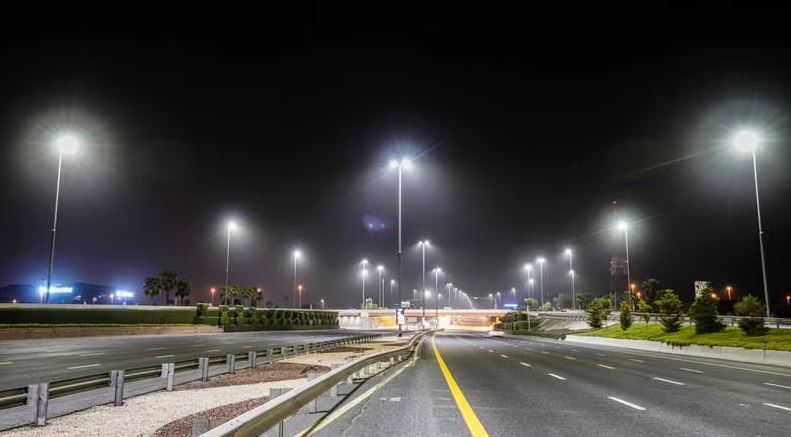Dubai’s Road and Transport Authority has announced a new Dh278 million street lighting project to improve safety for road users.
The Street Lighting Plan 2023-2026, which will be carried out in 40 areas across the emirate, aims to improve the infrastructure and meet the demands of Dubai’s growing population, Dubai’s Media Office reported.
Street lights will be installed in previously unlit areas, including Mirdif, Al Baraha, Oud Metha, Al Waheda, Al Hudaiba, Al Satwa, Abu Hail and Al Bada’a, as well as Umm Suqeim 1, 2 and 3, Al Safa 1 and 2, Al Manara, Al Mariyal Reserve Street, the road to Al Minhad Airbase and street and parking areas in Jumeirah.
The project will be further extended in 2025 where street lights will be installed at Umm Al Sheif, Al Sufouh 1, Al Quoz Residential Areas 1 and 3, Nad Al Hamar and Al Awir 2.
In 2026, various streets and car parks in Al Garhoud, Al Twar, Hasyan, Al Jafiliya, Al Marmoom, Al Qusais 1 and 2, Nad Al Sheba 1, Al Warsan 2, Hind City, Business Bay, Umm Ramool, Ras Al Khor Industrial Area 1 and 2, and Ras Al Khor Industrial Area 3 Street will have lights installed.
Mattar Al Tayer, director general and chairman of the board of executive directors of the authority, announced the project on Tuesday.
“The main goal of this plan is to improve traffic safety and security for all road users, including vehicles and pedestrians,” he said.
“The initiative is designed to contribute to residents’ and visitors’ well-being and satisfaction in the targeted areas.
“The selection of these areas is based on careful consideration of traffic safety and security standards, traffic volumes, and the pace of urban growth.”
The new lighting systems will use smart and sustainable technologies that are designed for the UAE’s climate.
The authority started work on designing the street lighting project last year for the Al Qusais Industrial Areas 1 to 5, as well as Al Lusaily and Lahbab 1 and 2. The projects are almost complete, the authority said.
Last year, more than 14,000 lights along Dubai’s roads were replaced with more eco-friendly alternatives.
The upgrade included at least 39 tunnels and crossings, lighting 22.6km of roadway.
The authority said the improvement project aimed to promote a clean environment.

